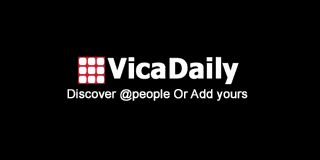Putting Patients First: How Power Platform is Revolutionizing Healthcare Delivery

Today, with the healthcare environment in constant flux, technology is a better factor or facilitator of patient care than any other. Providers have been seeking an effective solution to these complex healthcare needs, and Microsoft Power Platform has risen. It empowers operations management, performance improvement, innovation and, most importantly, anchors the patient’s vision at the forefront of care solutions.
This blog explains the Power Platform and its use in healthcare to enhance service delivery. It also provides details of some of the best-documented cases currently known.
What is the Microsoft Power Platform?
The Microsoft Power Platform is an integrated part of the Microsoft family of applications, including Power Apps, Power Automate, Power BI, and Power Virtual Agents. It allows organizations to build applications for particular businesses, design workflows, capture and analyze data, and construct intelligent conversational agents without writing IUMBs.
Within healthcare, the Power Platform increases the time nurses and other caregivers devote to caring for their patients. It also helps them with tedious paperwork, data, and operational tasks.
How the Power Platform Revolutionizes Healthcare
1. Enhancing Patient Engagement
Patients expect seamless, personalized interactions with their healthcare providers. With tools like Power Apps and Power Virtual Agents, organizations can create user-friendly patient portals and AI-powered chatbots that:
-
Schedule appointments.
-
Provide answers to common medical queries.
-
Enable secure communication between patients and providers.
For example, a hospital developed a Power App that allows patients to view their medical records, receive notifications, and request follow-ups. This app has resulted in higher patient satisfaction and better engagement.
2. Streamlining Administrative Processes
Administrative burdens often take time away from patient care. Power Automate helps healthcare organizations streamline repetitive tasks such as:
-
Insurance claim processing.
-
Patient registration and data entry.
-
Sending appointment reminders.
A clinic, for instance, used Power Automate to integrate its scheduling system with patient databases, reducing errors and no-shows while saving significant staff time.
3. Improving Data Analysis for Better Outcomes
Healthcare organizations can use Power BI to translate their vast amounts of data into usable information. Patient data can enable providers to evaluate patterns for more significant patient populations, disease diagnoses, and treatment efficiency.
For instance, a network of healthcare facilities needed a dashboard on COVID-19 status to provide data on where resources such as ventilators and ICU beds were most needed.
4. Empowering Collaboration Among Care Teams
Interdisciplinary teamwork is critical to healthcare delivery because the various care teams must communicate efficiently with one another. Using Power Apps, organizations can create applications that enhance teamwork and enable everyone to access current patient data.
For example, a rehabilitation center developed the Power App to track a patient’s progress. The therapists, doctors, and nurses are committed to working together and offering an integrated approach.
Real-World Success Stories
1. Pediatric Clinic Optimizes Vaccine Distribution
A pediatric clinic created a vaccine tracking model by using Power Apps. Initially, the app helped to schedule, manage stocks, report immunizations, meet the requirements set by the authorities, and provide quality medical care during immunization campaigns.
2. AI-Driven Chatbots Enhance Mental Health Support
In one case, for instance, a mental health organization adopted Power Virtual Agents primarily to support patients all through the day and night. The chatbot provided access to materials and information, linked users to counseling sessions, and provided fast access to crisis lines.
3. Hospital Reduces Admission Delays
A hospital elaborated on the solution of patient admission using Power Automate, stating that all documents and approvals would be done before the patients arrived. This also helped reduce admission delays and improve the rate of patient satisfaction.
The Role of Power Platform Consulting in Healthcare Transformation
While the Power Platform provides powerful tools, effectively implementing these solutions requires specialized expertise. This is where Power Platform Consulting comes into play.
Consulting services help healthcare organizations:
-
Identify Opportunities: Assess operations to pinpoint areas where the Power Platform can drive the most impact.
-
Develop Custom Solutions: Design applications and workflows tailored to the organization’s needs.
-
Ensure Compliance: Implement solutions that adhere to healthcare regulations such as HIPAA and GDPR.
-
Provide Training: Equip staff with the skills to maintain and expand solutions independently.
Getting Started with the Power Platform in Healthcare
Step 1: Define Objectives
Identify the specific challenges your organization wants to address, such as reducing patient wait times, improving communication, or enhancing data analysis.
Step 2: Leverage Power Platform Tools
Choose the right tools from the Power Platform suite based on your goals. For example:
-
Use Power Apps for custom applications like patient portals.
-
Leverage Power BI for data analytics and reporting.
-
Deploy Power Automate to automate repetitive tasks.
-
Implement Power Virtual Agents for AI-driven patient support.
Step 3: Partner with Experts
Collaborate with Power Platform consultants to develop solutions that will effectively improve the productivity of healthcare entities and align them with a suitable healthcare framework.
Step 4: Measure and Improve
Using the Power BI applied dashboards, constantly track the performance of offered solutions by gathering user feedback and analyzing the insights obtained.
The Future of Healthcare with the Power Platform
Microsoft has made significant progress in enhancing various healthcare platforms, primarily because enhancing the industry’s digital maturity is important as it progresses. By simplifying workflows, improving patient engagement, and enabling data-driven decisions, the Power Platform ensures that healthcare organizations can focus on what truly matters: Putting patients first.
Conclusion
Microsoft Power Platform is changing the face of healthcare delivery by breaking the barriers to innovation and making them meaningful. Integrating everything from automating administrative work to fostering patients’ involvement brings HL7 healthcare providers more efficient and innovative care delivery.
Many organizations will want to get the most out of the Power Platform, as seen in Power Platform Consulting Services, where we provide advisory services that are unique and specific to your enterprise solutions.







